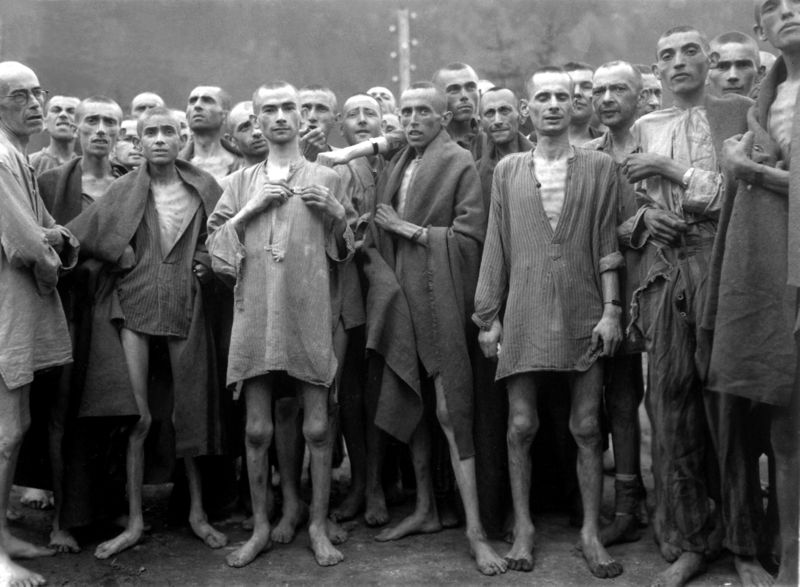Fellow Beliefnet blogger Brad Hirschfield of “Windows and Doors” takes issue with aspects of my post about a Vatican official’s explosive comparison of Gaza to “a big concentration camp.” Brad is at his civil best–no mean feat considering the topic–but has serious problems with a few things. I’ll respond point-by-point:
One, Brad says my argument that it “is only natural that Catholics over-react against Israel because of the possibility of Catholics being killed in Gaza” is “a dangerous road down which to travel.” I do think such religious or racial or ethnic solidarity is natural and understandable, yes, and that it is fine as long as that solidarity is not confined to one’s own tribe all the time. Moreover, this is also a road that Jews (and Arabs and Muslims) use quite frequently. A key difference here is that Catholics (and all Christians) are a tiny and diminishing minority in the land of Jesus’ birth, and violence like this truly threatens to expunge them in a way that it will not do for Arabs and Israelis anytime soon. Moreover, these Christians are not part of the violence against Israel; in a concrete way they are caught in the middle, between Israel and Hamas. But of course they are Arabs and Palestinians largely, and they identify with the Palestinian cause as they suffer under the brutal conditions. Finally, no one else will speak up for the Arab Christians there–without the Vatican’s voice, or that of the churches, the coverage and debate would be all about Arabs and Israelis, Muslims and Jews. Christians would be forgotten. I don’t think that’s “over-identification.”
Second, Brad refers to the photo I post about the suffering in Gaza and links it to a New York Times story “about a Hamas fighter who is happy to see his fellow Gazans die, and is eager to likewise, in order to attain martyrdom.” Brad asks: “I wonder why, especially for Catholics with the religious significance they attach to martyrdom, David chooses not to address this issue.” Actually, the photo was from an online NYT gallery and is captioned, “A Palestinian woman looked at her destroyed house after an Israeli airstrike in Gaza.” It was meant to show the kind of suffering that Gazans are enduring (I obviously could have chosen much worse)–and the kind of thing that prompts the criticism not only from the Catholic Church but from a wide range of international aid agencies and U.S. and world public opinion. I didn’t know of any connection with a story on Islamic martyrdom, which in any case is far different from the Christian idea of martyrdom–which is also different from the Jewish idea of martyrdom. That’s an interesting and terrible topic, but not exactly relevant to the post.
Third, Brad says my statement that a better comparison for Gaza than a “concentration camp” would be the Warsaw Ghetto “represents either tragic ignorance or something far darker, which only he can explain.” I don’t think it’s either ignorance or anything darker (at least I hope not). I do think as a historical parallel, the Warsaw Ghetto would be closer, but I hasten to add that it still wouldn’t work, and that any Holocaust comparisons are futile. Brad seems to think I endorsed that comparison, or Cardinal Martino’s analogy. He says: “We don’t need to participate in the shock culture of most media in order to make an important point. And I hope that next time David, you think twice about doing so.”
Perhaps the post needs to be read twice to see what I was saying–and perhaps that is a problem in the composition. But I don’t think ignoring the Catholic Church’s views, whether well-stated or over-stated (to explain them, not endorse them) or the near-extermination of Christianity in its birthplace, nor the sufferings of the Gazans–or the Israelis and the world’s Jews–is the way to go. We need to examine where these statements and positions and emotions come from, and where the fallout may leave us, in order to, hopefully, begin to pick up the pieces when the lull comes.
One other point I might dispute is Brad’s rejection of any Roman anti-Semitic cast to the issue. No, the Vatican isn’t reflexively anti-Semitic, or anti-Jewish. But the Curia is often home to the same kind of cultural suspicion or resentment of Judaism and the Jewish State that one finds in much of Europe. I’d have to think an American Catholic would be far less likely to make such a facile Holocaust analogy. On the other hand, whatever is in the hearts of the men in the Curia, it doesn’t necessarily invalidate their positions, anymore than Israeli bias against Palestinians might undermine the legitimacy of the Jewish State.
Finally, I’d also recommend John Allen’s latest analysis of the Vatican-Israel conflict, posted here at National Catholic Reporter. John rightly notes how balanced the Vatican’s tone and content has become compared to past years. The Pope and the Vatican are getting it from both sides. That is no fun, but it is perhaps a sign of some policy virtue, as well as legitimate solidarity with Catholics on the ground.
More from Beliefnet and our partners

